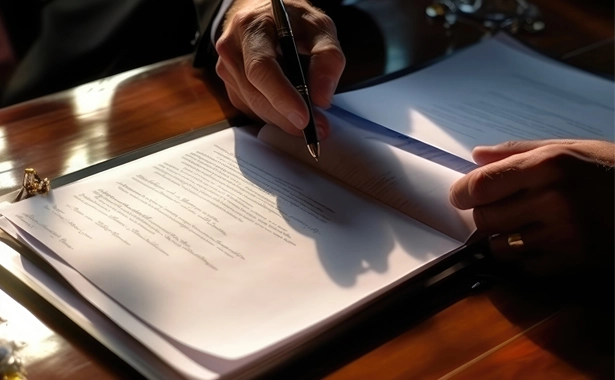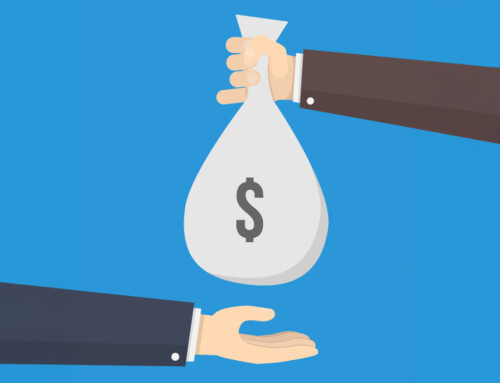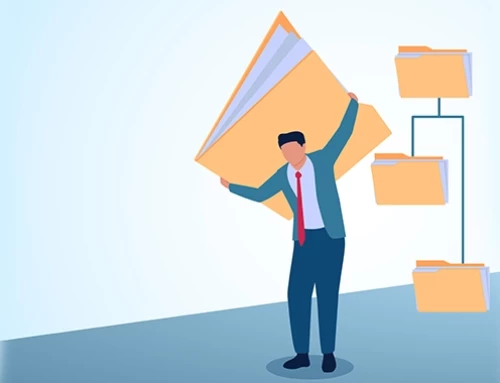Contents
In the world of intellectual property, patents play a crucial role in protecting inventions and innovations. A patent license agreement is a legal contract that allows the patent owner (licensor) to grant rights to another party (licensee) to use, manufacture, sell, or distribute the patented invention. These agreements are essential for fostering innovation, collaboration, and commercialization of new technologies. By entering into a patent license agreement, the licensor can monetize their invention while the licensee gains access to valuable technology without the risk of patent infringement. Understanding the intricacies of patent license agreements is vital for businesses, inventors, and legal professionals navigating the complex landscape of intellectual property. This guide will provide a comprehensive overview of patent license agreements, their key components, and the benefits they offer to both licensors and licensees.
What Is a Patent License?
A patent license is a legal agreement in which the patent holder (licensor) grants permission to another party (licensee) to use, manufacture, sell, or distribute the patented invention. This agreement typically involves terms and conditions such as the scope of the license, duration, royalties or other compensation, and any limitations on the use of the patent. A patent license allows the licensee to legally utilize the patented technology or product without facing infringement claims, while the licensor retains ownership of the patent.
Key Components of Patent License Agreements
Patent license agreements are critical documents that outline the terms under which a patent holder allows another party to use their patented invention. Here are the key components typically found in patent license agreements:
Parties Involved
The licensor is the patent owner granting the license, and the licensee is the party receiving the license to use the patent.
Recitals
The recitals section provides background information and the purpose of the agreement, including the identification of the patent(s) being licensed. This sets the stage for the specific terms of the agreement.
Grant of License
The grant of license defines the type of license being granted, which can be exclusive, non-exclusive, or sole. It also specifies the scope of the license, detailing the specific uses, manufacturing, selling, and distributing rights, as well as the geographic territory covered by the license and its duration.
Financial Terms
Financial terms are a crucial component, outlining the payment structure for the license. This includes royalties, which are typically based on a percentage of sales, fixed fees, or lump sum payments. Upfront fees, minimum royalties, and the payment schedule, including frequency and due dates, are also detailed here.
Reporting and Record-Keeping
Reporting and record-keeping requirements ensure transparency and accountability. Licensees must provide periodic sales and royalty reports, and licensors have the right to audit these reports to verify accuracy.
Intellectual Property Rights
Intellectual property rights clauses cover the ownership of the patents and any improvements or modifications made. They also include provisions for the maintenance and enforcement of the patents and prohibit the licensee from challenging the validity of the patents.
Confidentiality
Confidentiality obligations require both parties to keep proprietary information confidential, specifying the duration of these obligations.
Indemnification and Liability
Indemnification and liability clauses protect the licensor from legal claims arising from the licensee’s use of the patent and outline any limitations on liability for both parties.
Improvements and Modifications
The agreement also addresses improvements and modifications, defining the rights and obligations related to any enhancements or changes to the patented technology and the ownership of such improvements.
Termination
Termination conditions specify the circumstances under which the agreement can be terminated, such as breach of contract or mutual agreement, and the effects of termination on the rights and obligations of the parties.
Dispute Resolution
Dispute resolution mechanisms, such as mediation, arbitration, or litigation, are included to handle any conflicts that may arise, along with the jurisdiction and governing law.
Miscellaneous Provisions
Miscellaneous provisions cover the assignment and transferability of the license, notices and communication methods, and an entire agreement clause stating that the agreement supersedes all prior discussions and agreements. Amendment provisions outline how the agreement can be modified.
Signatures
The signatures of authorized representatives from both parties, along with the date of execution, are necessary to formalize the agreement.
Exhibits and Schedules
Finally, exhibits and schedules provide a detailed list of the patents being licensed and any additional documents or schedules referenced in the agreement.
Understanding these key components helps both licensors and licensees ensure their rights and obligations are clearly defined and protected, fostering a mutually beneficial relationship.
Licensee Rights and Restrictions
Licensee rights and restrictions vary depending on the type of license agreement, but they typically include key points. Usage rights grant the licensee the right to use the licensed product (software, intellectual property, etc.) as specified in the agreement, which can be limited to certain fields, geographical areas, or time periods.
Modification rights, depending on the license type, may allow the licensee to modify, adapt, or improve the licensed material, with open-source licenses often permitting modification and redistribution of the source code. Distribution rights might enable the licensee to distribute copies of the licensed product, either for free or for profit, a common practice in software licenses where end-users can share the software within specified constraints. The licensee may also have the rights to receive support and maintenance services from the licensor, which often include updates, bug fixes, and technical support. Additionally, the licensee may gain rights to certain intellectual property, like patents or trademarks, under the terms of the license, commonly seen in technology and brand licensing agreements.
However, restrictions also apply. The licensee can only use the licensed product within the scope defined by the agreement, with restrictions based on the number of users, devices, or installations. Transfer and assignment of the license to another party typically require the licensor’s consent, although some licenses may allow transfer under specific conditions. Many licenses prohibit the licensee from modifying, reverse engineering, decompiling, or disassembling the licensed product to protect the licensor’s intellectual property and trade secrets.
Certain licenses may restrict commercial use of the licensed product, allowing only personal or academic use while prohibiting commercial exploitation. Compliance with all applicable laws and regulations, including export control laws and data protection regulations, is mandatory for the licensee.
The licensee must keep any confidential information received from the licensor secure and not disclose it to third parties to protect proprietary information and trade secrets. Finally, the licensee must adhere to terms that could lead to the termination of the license, such as breach of the license agreement, bankruptcy, or non-payment of fees. Understanding these rights and restrictions is essential for both licensors and licensees to ensure compliance with the terms of the license agreement and protection of their respective interests.
Types of Patent Licensing Agreements
Patent licensing agreements can vary widely depending on the nature of the technology, the industries involved, and the specific goals of the parties. Here are the main types of patent licensing agreements:
An Exclusive License grants the licensee exclusive rights to use the patent. The licensor cannot grant the same rights to anyone else and often cannot use the patent themselves. This type of agreement is typically used when the licensee wants to have a competitive advantage and full control over the patented technology.
A Non-Exclusive License allows the licensor to grant the same rights to multiple licensees. The licensor retains the right to use the patent and to license it to others. This arrangement is suitable for licensors seeking to maximize the commercialization of their patent through multiple licensees.
A Sole License is a mix between exclusive and non-exclusive licenses. Only one licensee is granted rights, but the licensor retains the right to use the patent. This is ideal when the licensor wants to maintain the ability to use the patent while also giving significant rights to one licensee.
A Cross License involves two parties granting licenses to each other for their respective patents. This can be done to avoid litigation and promote collaborative use of each party’s technology. It is common in industries where companies hold large patent portfolios, like technology and pharmaceuticals.
A Sub-License allows the licensee to grant licenses to third parties. The terms of sub-licensing are usually defined in the primary licensing agreement. This type of agreement is used when the licensee needs to allow third parties to use the patent, often in complex supply chains or distribution networks.
A Field-of-Use License restricts the licensee’s use of the patent to a specific field or application. This is useful when a patent has multiple potential applications and the licensor wants to control exploitation in different markets.
A Territorial License limits the licensee’s rights to a specific geographic area. This type of agreement is applied when the licensor wants to exploit the patent in different regions through different licensees.
A Grant-Back License requires the licensee to grant back to the licensor any improvements made to the licensed patent. This ensures that the licensor benefits from enhancements to their technology made by the licensee.
A Royalty-Free License allows the licensee to use the patent without paying ongoing royalties. There might be an upfront fee or no fee at all. This type of license is often used in academic or non-profit contexts, or as part of a strategic partnership.
A Paid-Up License involves the licensee paying a one-time fee for the perpetual use of the patent without further royalties. This arrangement is suitable for licensees wanting to avoid ongoing royalty payments and licensors wanting an immediate lump sum.
Each type of licensing agreement has its own strategic advantages and is suited to different business needs and market conditions.Top of FormBottom of Form
Examining the Enforceability of Patent License Agreements
Patent license agreements are critical tools for both patent holders and licensees, allowing the former to monetize their inventions while enabling the latter to utilize patented technology without the risk of infringement. The enforceability of these agreements is a complex area of law influenced by various legal principles and jurisdictional nuances. Below is a detailed examination of the key aspects that affect the enforceability of patent license agreements.
Legal Requirements for Enforceable Contracts
To be enforceable, a patent license agreement must satisfy the basic requirements of a contract:
- Offer and Acceptance: There must be a clear offer by the licensor and an acceptance by the licensee.
- Consideration: There must be something of value exchanged between the parties, typically a payment or royalty in return for the right to use the patented technology.
- Intention to Create Legal Relations: Both parties must intend for the agreement to be legally binding.
- Capacity: Both parties must have the legal capacity to enter into the agreement.
- Legality: The agreement’s terms must be legal and not violate any public policy.
Scope of the License
The scope of the license is a crucial element that determines its enforceability. The agreement should clearly define:
- Field of Use: The specific area or industry where the licensee can use the patented technology.
- Territory: The geographic region where the licensee is permitted to operate under the license.
- Duration: The period during which the license is valid.
Compliance with Antitrust Laws
Patent license agreements must comply with antitrust laws to avoid being deemed unenforceable. Terms that may raise antitrust concerns include:
- Exclusivity Provisions: While exclusive licenses are generally enforceable, they must not unduly restrict competition.
- Price-Fixing: Agreements that set prices for products incorporating the licensed technology can be problematic.
- Market Division: Dividing markets among competitors can violate antitrust laws.
Patent Misuse and Inequitable Conduct
Patent misuse occurs when a patentee uses the patent to unlawfully extend its monopoly beyond the scope of the patent. This can render the license agreement unenforceable. Examples include:
- Tying Arrangements: Requiring the licensee to buy unrelated products as a condition of obtaining the license.
- Extending the Patent Term: Attempting to extend the licensing terms beyond the patent’s expiration.
Inequitable conduct, such as fraudulently obtaining the patent, can also affect enforceability.
Adherence to Formalities
Certain formalities must be observed to ensure the enforceability of patent license agreements:
- Writing Requirement: While not always mandatory, having a written agreement helps avoid disputes and provides clear evidence of the terms.
- Registration: In some jurisdictions, registering the license with the relevant patent office can be necessary to enforce the agreement against third parties.
Dispute Resolution Provisions
Including clear dispute resolution mechanisms can enhance the enforceability of patent license agreements. Common provisions include:
- Governing Law: Specifying which jurisdiction’s laws will govern the agreement.
- Arbitration Clauses: Agreeing to resolve disputes through arbitration rather than litigation.
- Mediation Requirements: Requiring the parties to attempt mediation before resorting to litigation or arbitration.
Termination Clauses
The agreement should include clear terms regarding its termination, including:
- Termination for Breach: Conditions under which either party can terminate the agreement due to the other’s breach.
- Termination for Convenience: Provisions allowing termination by mutual agreement or at the discretion of one party under certain conditions.
- Post-Termination Obligations: Obligations that survive termination, such as confidentiality and payment of accrued royalties.
The enforceability of patent license agreements hinges on careful drafting and adherence to legal principles. By ensuring that the agreement meets the basic requirements of a contract, complies with antitrust laws, avoids patent misuse, and includes clear terms and dispute resolution mechanisms, parties can create robust and enforceable agreements that benefit both licensors and licensees.
Court Rulings on the Validity of Patent License Agreements
Court rulings on the validity of patent license agreements often revolve around various legal and contractual issues. Here are some key points and notable cases that highlight the principles and precedents in this area:
Key Legal Principles
- Contractual Validity: Patent license agreements are contracts, and their validity is often assessed based on general principles of contract law, such as offer, acceptance, consideration, and mutual consent.
- Patent Misuse: Courts may invalidate patent license agreements if they constitute patent misuse, which involves practices that impermissibly broaden the scope of the patent grant with anticompetitive effects.
- Antitrust Considerations: Some patent license agreements may be challenged under antitrust laws if they are deemed to restrain trade or create monopolistic practices.
- Enforceability of Terms: Specific terms within patent license agreements, such as royalty rates, field-of-use restrictions, and termination clauses, are scrutinized to ensure they are reasonable and enforceable.
Notable Cases
– Brulotte v. Thys Co. (1964): The U.S. Supreme Court ruled that a patent holder cannot continue to receive royalties for a patent after its expiration. This case established a principle against extending patent monopolies beyond their statutory term.
– Kimble v. Marvel Entertainment, LLC (2015): The Supreme Court upheld the Brulotte ruling, reaffirming that post-expiration royalties are not enforceable. The decision emphasized the importance of adhering to statutory limits on patent rights.
– Lear, Inc. v. Adkins (1969): This case established the doctrine that a licensee can challenge the validity of a patent even while the license agreement is in force. It reinforced the policy of promoting the free use of ideas in the public domain.
– MedImmune, Inc. v. Genentech, Inc. (2007): The Supreme Court held that a licensee in good standing does not have to breach or terminate a license agreement to challenge the validity of the licensed patent. This ruling allows licensees to seek declaratory judgments on patent validity without risking breach of contract.
Practical Implications
- Drafting Agreements: When drafting patent license agreements, parties must ensure clarity in terms, compliance with patent laws, and consideration of potential antitrust implications.
- Litigation Risks: Parties to a patent license agreement should be aware of the potential for litigation, particularly around issues of patent validity, misuse, and enforceability of specific terms.
- Post-Expiration Royalties: Licensors should avoid provisions for post-expiration royalties to ensure compliance with established legal principles and avoid invalidation of the agreement.
These principles and cases form the foundation of the legal landscape surrounding the validity of patent license agreements, guiding both licensors and licensees in their contractual and legal strategies.
The Significance of Patent License Agreements
A patent agreement is crucial for fostering innovation, protecting intellectual property rights, and promoting business growth. Here are the key reasons why these agreements are important:
Monetization of Intellectual Property: Patent license agreements allow inventors and companies to monetize their inventions by granting others the right to use their patented technology in exchange for royalties or other compensation.
Encouragement of Innovation: By providing a financial incentive for inventors, patent license agreements encourage further research and development. This leads to the continuous advancement of technology and the creation of new products and services.
Access to Technology: These agreements enable companies to access cutting-edge technology without the need to develop it internally. This can be particularly beneficial for small and medium-sized enterprises that lack the resources for extensive research and development.
Market Expansion: Patent license agreements can facilitate market expansion by allowing multiple entities to manufacture, use, and sell products based on the licensed technology. This can lead to increased market presence and revenue.
Risk Mitigation: For licensors, these agreements help mitigate the risk of patent infringement by providing a legal framework for authorized use of their technology. For licensees, it reduces the risk of costly litigation.
Collaboration and Partnerships: Patent license agreements often serve as the foundation for strategic collaborations and partnerships between companies, fostering a spirit of cooperation and mutual benefit.
Economic Growth: By enabling the commercialization of new technologies, patent license agreements contribute to economic growth, job creation, and increased competitiveness in the global market.
In summary, a patent contract plays a vital role in the innovation ecosystem by providing financial rewards, facilitating access to technology, encouraging collaboration, and contributing to economic development.
How to License a Patent for Royalties
Licensing a patent for royalties involves several steps to ensure that the agreement is legally sound and beneficial for both the licensor (patent holder) and the licensee (the party obtaining the rights).
Step-by-Step Guide to Licensing a Patent for Royalties
- Prepare Your Patent
Before licensing your patent, ensure that your patent is granted and in good standing, that you have all necessary documentation proving ownership, and that the patent’s scope and claims are well-defined and clear.
- Identify Potential Licensees
Identify companies or individuals who would benefit from using your patented technology, such as companies in related industries, businesses that already use similar technologies, and new startups looking for innovative solutions.
- Conduct Due Diligence
Before entering into negotiations, conduct due diligence on potential licensees to ensure they have the financial stability and market presence to benefit from your technology.
- Determine the Licensing Model
Decide on the type of license you want to offer: an exclusive license, which grants the licensee exclusive rights to use the patent, meaning you cannot license it to others; a non-exclusive license, which allows you to license the patent to multiple parties; or a sole license, a middle ground where only one licensee is permitted, but the licensor retains the right to use the patent.
- Set Royalty Terms
Determine how royalties will be calculated and paid. Common royalty structures include fixed royalties, which are a set amount per unit sold; percentage royalties, which are a percentage of the sales revenue; and minimum royalties, which are a guaranteed minimum payment regardless of sales volume.
- Draft the License Agreement
Include the following key elements in your patent license agreement: define the scope, field of use, and territorial limits of the license in the grant of license; specify the royalty rate, payment schedule, and audit rights to verify royalty payments in the royalty terms; state the duration of the license and any renewal terms; outline the frequency and format of sales reports from the licensee in the reporting requirements; include terms to ensure the licensee maintains quality standards; define conditions under which the agreement can be terminated by either party in the termination clauses; and specify the governing law and methods for resolving disputes, such as arbitration or mediation, in the dispute resolution section.
- Negotiate the Agreement
Engage in negotiations with potential licensees to agree on the terms. Be prepared to make concessions and adjustments to meet mutual interests.
- Execute the Agreement
Once both parties agree on the terms, execute the agreement with signatures from authorized representatives of both parties. Ensure that all copies of the agreement are properly stored and accessible.
- Register the License (if necessary)
In some jurisdictions, it may be required or beneficial to register the license with the relevant patent office. This can provide additional legal protections.
- Monitor and Enforce the Agreement
Regularly monitor the licensee’s use of the patent and ensure they comply with the terms of the agreement. Address any breaches promptly and consider audits to verify royalty payments.
Engage a lawyer experienced in intellectual property and licensing agreements to draft and review the contract. Conduct thorough market research to understand the potential value of your patent and set appropriate royalty rates. Use non-disclosure agreements (NDAs) during negotiations to protect your intellectual property.
Patent License Agreement Template
This Patent License Agreement (“Agreement”) is made and entered into as of [Effective Date], by and between:
Licensor:
Name: [Licensor Name] Address: [Licensor Address] City, State, ZIP: [City, State, ZIP] Email: [Licensor Email] Phone: [Licensor Phone]
Licensee:
Name: [Licensee Name] Address: [Licensee Address] City, State, ZIP: [City, State, ZIP] Email: [Licensee Email] Phone: [Licensee Phone]
Recitals
WHEREAS, Licensor is the owner of certain patents and patent applications listed in Exhibit A (the “Patents”);
WHEREAS, Licensee desires to obtain a license to use the Patents, and Licensor is willing to grant such a license under the terms and conditions set forth in this Agreement.
NOW, THEREFORE, in consideration of the mutual promises and covenants contained herein, the parties agree as follows:
- Grant of License
1.1 Licensor hereby grants to Licensee a [exclusive/non-exclusive] license to use, manufacture, sell, and distribute the inventions covered by the Patents (“Licensed Products”) in the [territory/field of use], subject to the terms and conditions of this Agreement.
- Term
2.1 This Agreement shall commence on the Effective Date and continue until [expiration date] or until terminated in accordance with Section 8 of this Agreement.
- Royalties and Payment
3.1 Licensee shall pay to Licensor a royalty of [percentage]% of the net sales of Licensed Products.
3.2 Royalties shall be paid [monthly/quarterly/annually] within [number] days following the end of each [month/quarter/year].
- Reports and Records
4.1 The Licensee shall provide the Licensor with written reports detailing the sales of Licensed Products and the corresponding royalties owed.
4.2 The Licensee shall maintain accurate records of sales and royalties and permit the Licensor to audit such records upon reasonable notice.
- Intellectual Property Rights
5.1 All rights, title, and interest in and to the Patents remain with the Licensor.
5.2 The Licensee shall not challenge the validity or enforceability of the Patents during the term of this Agreement.
- Confidentiality
6.1 Both parties agree to maintain the confidentiality of all proprietary information disclosed under this Agreement.
- Indemnification
7.1 The Licensee agrees to indemnify and hold harmless the Licensor against any claims, damages, or liabilities arising from the Licensee’s use of the Patents.
- Termination
8.1 This Agreement may be terminated by either party upon [number] days written notice if the other party breaches any material term of this Agreement and fails to cure such breach within [number] days after receiving notice.
8.2 Upon termination, Licensee shall cease all use of the Patents and any Licensed Products.
- Governing Law
9.1 This Agreement shall be governed by and construed in accordance with the laws of the State of [State].
- Miscellaneous
10.1 This Agreement constitutes the entire agreement between the parties and supersedes all prior agreements or understandings.
10.2 Any amendments or modifications to this Agreement must be in writing and signed by both parties.
IN WITNESS WHEREOF, the parties have executed this Agreement as of the Effective Date.
Licensor:[Licensor Name]
Signature: ______________________
Name: [Printed Name]
Title: [Title]
Date: ______________________
Licensee:[Licensee Name]
Signature: ______________________
Name: [Printed Name]
Title: [Title]
Date: ______________________
Exhibit A – Patents
[List of Patents and Patent Applications]
Conclusion
Patent license agreements are indispensable in the realm of intellectual property, serving as pivotal instruments for protecting innovations and facilitating their commercialization. These agreements offer a structured framework that balances the interests of both licensors and licensees, enabling inventors to monetize their patents while providing licensees access to valuable technologies without the risk of infringement.
Understanding the key components of patent license agreements—such as the grant of license, financial terms, intellectual property rights, and dispute resolution mechanisms—is crucial for ensuring that both parties’ rights and obligations are clearly defined and protected. Various types of licenses, from exclusive to non-exclusive, and specialized agreements like cross-licenses and field-of-use licenses, offer tailored solutions to meet diverse business needs and market conditions.
The enforceability of these agreements hinges on meticulous drafting, compliance with legal requirements, and adherence to antitrust laws, ensuring that both licensors and licensees can engage in mutually beneficial arrangements with confidence. Notable court rulings underscore the importance of clear and lawful terms, influencing how these agreements are structured and upheld.
In essence, patent license agreements play a vital role in fostering innovation, promoting collaboration, and driving economic growth by enabling the efficient transfer and utilization of patented technologies. For businesses, inventors, and legal professionals, a deep understanding of these agreements is essential for navigating the complex landscape of intellectual property and leveraging patents as strategic assets.
Disclaimer: The content provided on this blog is for informational purposes only and does not constitute legal, financial, or professional advice.






